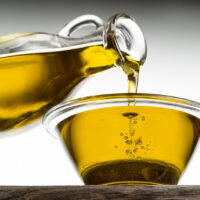A Complete Guide to Lawn Fertilization
A shabby lawn can really bring down the curb appeal of a house. But if the lawn is maintained, it makes the home look nicer and adds to the appeal and value of the property. An essential component of maintaining grass is a regular lawn fertilization schedule. Frequently fertilizing the lawn can help keep it lush and healthy.

Types of lawn fertilizers
There are two main types of lawn fertilizers: Synthetic and organic.
Organic fertilizers : These are produced using compost, bone meal, and blood meal. They are long-term, slow-release fertilizers that deliver a consistent supply of nutrients. Organic fertilizers are a terrific choice to fertilize your lawn naturally and sustainably.
Synthetic fertilizers : These are formed of chemicals and give the grass a fast boost of nutrients. Since they work quickly, outcomes are obtained more quickly. However, they should only be used with discretion as they can damage the environment.
When to fertilize your lawn?
The variety of grass you have and the local climate will determine the optimal time to fertilize your lawn. The best season to fertilize your lawn is often between late spring and early fall when it is the growing season. During the growing season, fertilizing gives your grass the vital nutrition to develop into a robust, healthy plant.
When the grass is actively developing, late spring or early summer is ideal for fertilizing warm-season grasses like Bermuda, St. Augustine, and Zoysia. The optimal time to fertilize cool-season grasses like Kentucky Bluegrass, Fescue, and Ryegrass is in the fall when the grass is ready for winter.
Lawn fertilization tips
Along with a lawn fertilizing schedule , there are some factors you need to take care of:
The formula of the fertilizer
Before beginning the fertilization procedure, reading the label on the fertilizer bags is crucial. The composition of nitrogen, phosphate, and potassium is often stated explicitly on every bag. A bag of fertilizer marked 20-5-10 would contain 20% nitrogen, 5% phosphate, and 10% potassium, respectively. The remaining components of the substance are filler. When you begin fertilizing your grass, this is the composition you should be aiming for.
Use the appropriate fertilizer
There are many fertilizer options available for use on your grass. Seek out those with slow-release nitrogen. The slower the release, the better. It reduces the chance that nutrients may prematurely leave your lawn. It also minimizes growth flushes that can make mowing challenging, and helps feed the grass evenly.
Apply fertilizer to the proper areas
As much fertilizer as you can keep on your lawn, fertilizer typically gets on streets, sidewalks, pathways, and driveways. You can blow or sweep this fertilizer back into your lawn, sweep it up, and put it back in the bag. If fertilizer is left on hard surfaces, it may wash into nearby streams, lakes, or other bodies of water, and storm drains.
Fertilizers should be kept in their proper place to protect the water. If the fertilizer you use for your lawn doesn’t contain pesticides or herbicides, you can fertilize your shrubs and other plants simultaneously.
Watering
After applying fertilizer, the grass shows signs of growth, and watering is necessary to encourage further growth. The growth is better and requires more fertilizer in the subsequent application the more water you provide. If your garden has automatic sprinklers, fertilizer applications should be made every six weeks.
You must offer an additional two-week respite if there isn’t one. Additionally, you must read the watering directions included in the fertilizer packets. Other fertilizers require watering after application, whereas powdered fertilizers need water to break down completely.
Best season to fertilize your lawn
Generally speaking, spring and fall are the optimum times to fertilize your grass. The reasons behind this are:
The best season to fertilize your lawn is in the spring since it aids in the recovery of the grass from the winter and prepares it for the sweltering summer. In addition to encouraging strong root growth, fertilizing in the spring strengthens grass.
A great time to fertilize your grass is in the fall. By fertilizing in the fall, you may help your lawn store nutrients for the winter, giving it the resilience it needs to withstand the chilly temperatures. Additionally, fall fertilizing encourages root development, which aids in your lawn’s speedy spring recovery.
The best sort of lawn fertilizer should be chosen in addition to the time of fertilization. Find a fertilizer with the nutrients your grass needs, including nitrogen, phosphorus, and potassium. Additionally, it’s crucial to follow the directions on the fertilizer bottle and refrain from overfertilizing your lawn, which can harm your grass.
Conclusion
Fertilizing your lawn is an essential component of lawn management that can promote healthy growth and keep it appearing green and alive. By choosing the right fertilizers and following the appropriate lawn fertilization schedule, you can keep your lawn looking its best all year.
To minimize damaging the environment, remember to fertilize throughout the growing season, select the proper fertilizer for your grass type, and apply fertilizers wisely. With the help of these suggestions, your lawn will look lovely and be in good health.











